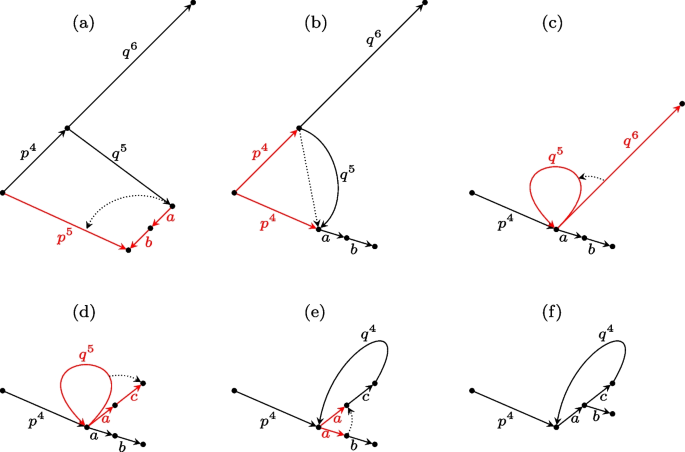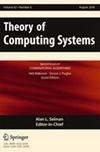Subgroup Membership in GL(2,Z)
IF 0.4
4区 计算机科学
Q4 COMPUTER SCIENCE, THEORY & METHODS
引用次数: 0
Abstract
Abstract It is shown that the subgroup membership problem for a virtually free group can be decided in polynomial time when all group elements are represented by so-called power words, i.e., words of the form $$p_1^{z_1} p_2^{z_2} \cdots p_k^{z_k}$$

GL(2,Z)中的子群隶属
摘要证明了一个几乎自由群的子群隶属问题可以在多项式时间内决定,当所有群元素都由所谓的幂词表示时,即$$p_1^{z_1} p_2^{z_2} \cdots p_k^{z_k}$$ p 1 z 1 p 2 z 2⋯p k z k。这里的$$p_i$$ pi是组的生成集上的显式单词,所有的$$z_i$$ zi都是二进制编码的整数。作为推论,当$$\textsf{GL}(2,\mathbb {Z})$$ GL (2, Z)的元素用二进制编码的整数矩阵表示时,矩阵群$$\textsf{GL}(2,\mathbb {Z})$$ GL (2, Z)的子群隶属性问题可以在多项式时间内确定。对于相同的输入表示,它还表明可以在多项式时间内计算给定的有限生成的子群$$\textsf{GL}(2,\mathbb {Z})$$ GL (2, Z)的索引。
本文章由计算机程序翻译,如有差异,请以英文原文为准。
求助全文
约1分钟内获得全文
求助全文
来源期刊

Theory of Computing Systems
工程技术-计算机:理论方法
CiteScore
1.90
自引率
0.00%
发文量
36
审稿时长
6-12 weeks
期刊介绍:
TOCS is devoted to publishing original research from all areas of theoretical computer science, ranging from foundational areas such as computational complexity, to fundamental areas such as algorithms and data structures, to focused areas such as parallel and distributed algorithms and architectures.
 求助内容:
求助内容: 应助结果提醒方式:
应助结果提醒方式:


